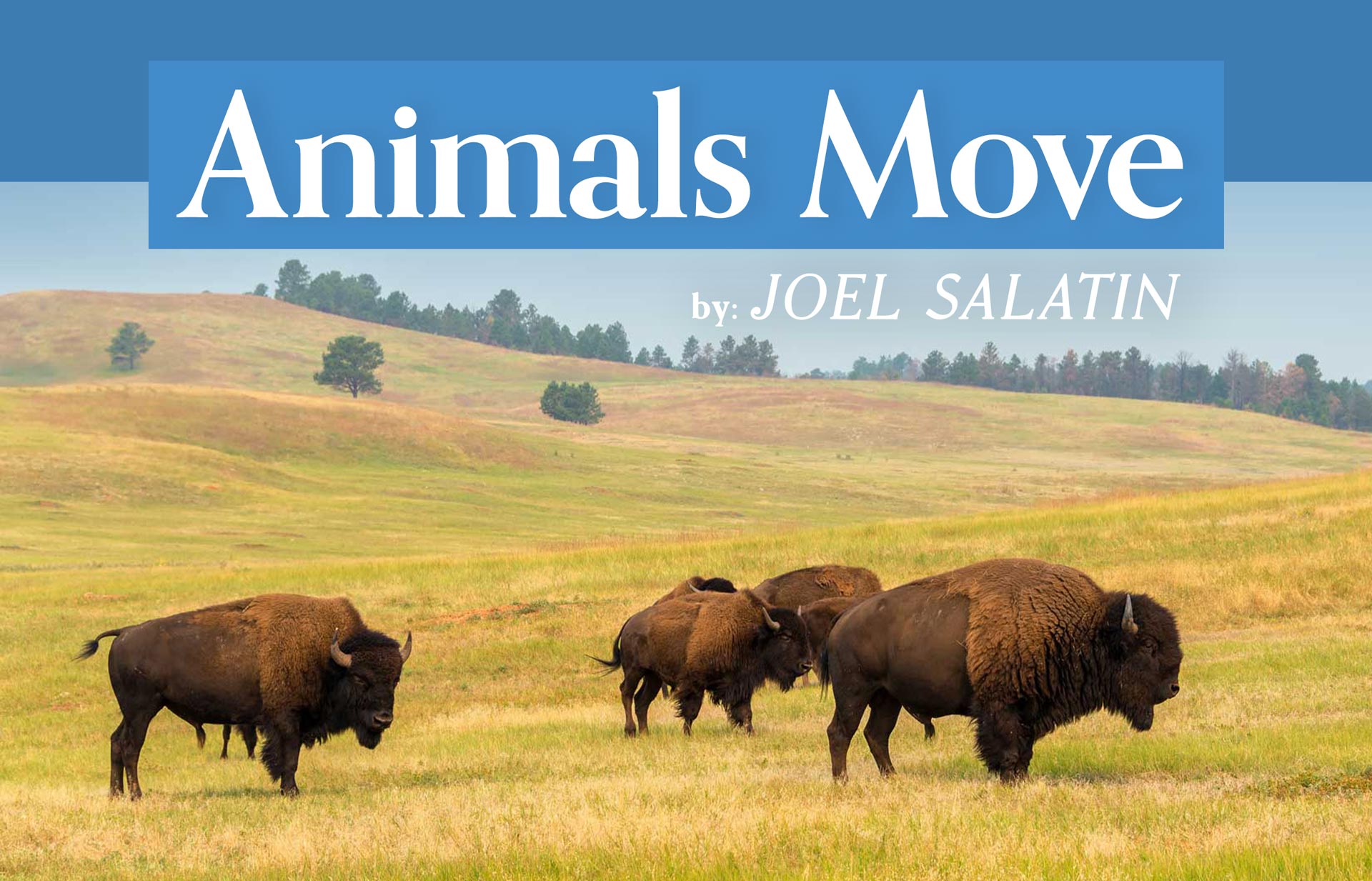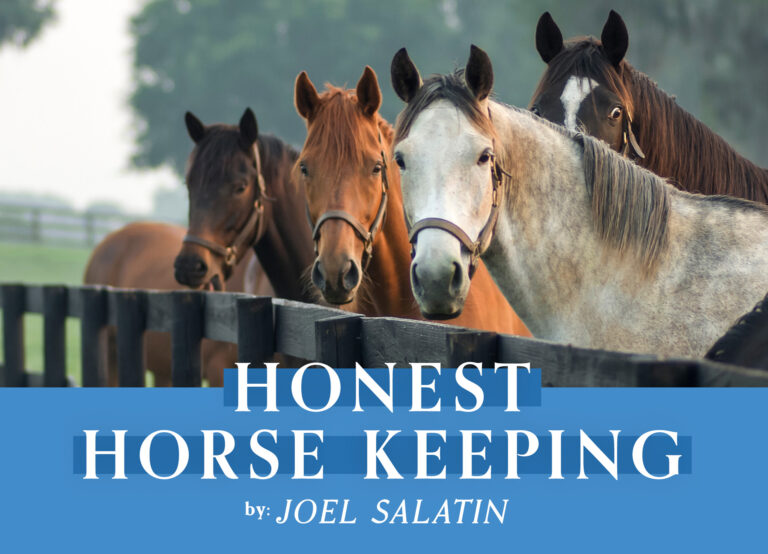by Joel Salatin, Plain Values
In animal husbandry and livestock production, probably the most common violation of God’s design is failure to mimic animal movement.
Whether it’s a horse paddock, dog run, or a 1,000 cow herd, keeping animals requires intentional and managed movement. Studying God’s design in nature reveals a remarkably sophisticated animal choreography. In the wild, animals don’t stay in the same place; they move—dramatically.
Migratory patterns stamped on the landscape are some of the oldest and most indelible features archeologists study. The largest ones still existing occur in Africa on the Serengeti. However, based on both written and oral records, we know that these animal movements existed all over the globe, including here in North America with massive bison herds.
Captain Jim Bridger, dispatched to explore the Black Hills in the 1800s, wrote that his regiment fell in behind a 7 million head herd of bison and could not find enough forage to feed their horses for several days due to the devastation in the herd’s wake. How he knew the herd numbered 7 million, I’ve never been able to discern, but even if he was off by half, that’s a big bunch of critters.
In 1870 an early pioneer into Arkansas recorded that he came upon a herd of bison 50 miles long and 20 miles wide. He said they were bunched tight enough that he couldn’t see any prairie between the animals. Again, even if he was off by a factor of half, that is still a herd almost too big to imagine.
My mentor Allan Nation, founder of Stockman Grass Farmer magazine, said that if you could have flown a drone over North America in 1800, you would have thought people were controlling the bison with electric fencing. Native Americans routinely lit fires to freshen up the grass when too much old material accumulated. The bison would adhere to these burned-over areas, avoiding the unburned, creating a landscape mosaic of palatable and unpalatable areas. These lines guided the herds in their grazing as precisely as fencing.
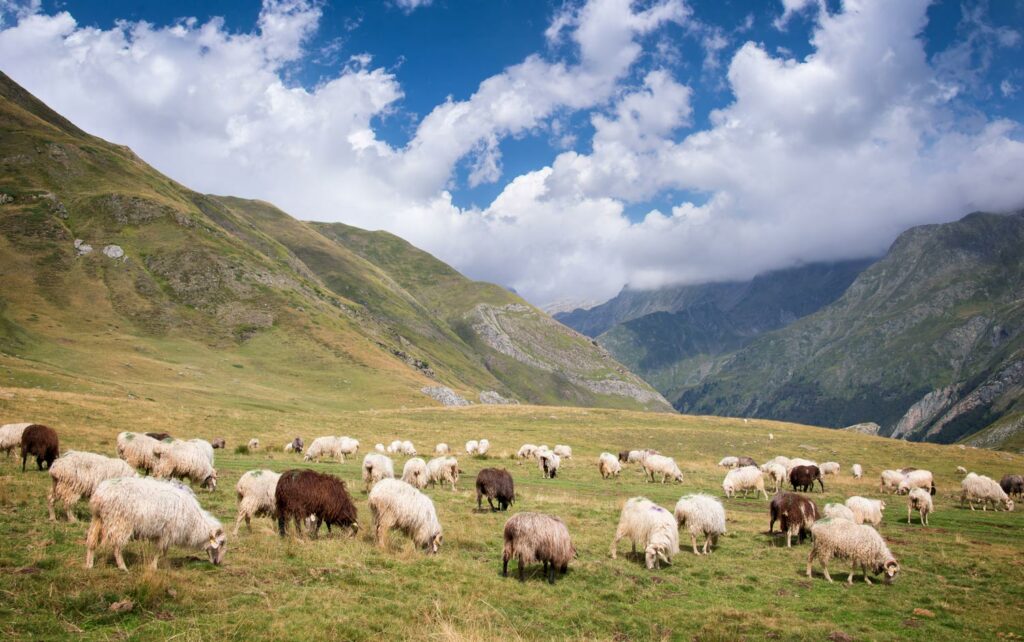
The iconic naturalist John James Audubon recorded in his diary in the early 1800s that he couldn’t see the sun for three days because it was blotted out by a flock of passenger pigeons. Imagine a flock of birds that huge. Oral Native American tradition says that these flocks would come in and roost in trees thick enough to break down all the branches, creating a forest of bare trunk spires.
These birds did not live in Tyson chicken houses. They didn’t eat human-planted grain. The bison, the birds, and all wildlife moved across large expanses. They certainly didn’t pick a spot and live there, in their own excrement, for days on end. This movement accomplished several things:
SANITATION
Because animals aren’t potty trained and don’t wear diapers, they create hygiene by walking away from their excrement. Fortunately, birds love herbivore manure; it contains helpful digestive enzymes for the birds. Today the egret on the rhino’s nose and birds following cape buffalo show the symbiotic relationship between herbivores and birds.
An animal’s first line of defense to stay healthy is to stay away from its own dung. Parasites and pathogens thrive in manure. Getting away from it and giving that soiled area time to decompose and incorporate into the soil maintains a sanitary environment for the animal.
FERTILITY
The natural gravitational movement of minerals, sticks, leaves, and other organic material from higher ground to lower ground creates fertile valleys and barren ridges and slopes. One of the most important environmental contributions from animals is to defy this gravitational translocation of nutrients.
By eating in the fertile valleys and climbing up to high ground to chew their cud, the herbivores move fertility from low ground to high ground. Predators make the animals want to find high ground for lounge areas. This is God’s way of democratizing soil development. Without the animals to eat and carry low ground material up to high ground in the form of excrement, the landscape would gradually show barren high ground and overly fertile low ground.
REST
Forage grows in a sigmoid curve, meaning it starts slow, gains speed, and then goes into senescence. This whole process can take as few as 50 days on some species. Because short forage has a small solar panel (leaves), it grows slowly. An herbivore can and will eat forage far below its optimal solar panel size. In other words, an animal can eat forage short enough to stunt its growth.
Because these wild herds and flocks moved long distances, rest periods were long enough to make sure that the forage had enough rest time to build back blades and energy reserves in the roots. Most domestic livestock producers in the world never allow their forages to get out of first gear, so to speak, because the plants stay short due to continuous grazing. In God’s design, animals visit and then leave an area long enough for the forage to grow back toward peak physiological expression.
FRESHNESS
Constantly seeking fresh, rested forage kept animals moving toward new areas. Imagine a salad bar. Who wants to eat at an unreplenished, stale salad bar where everything is wilted and the favorite items are unavailable? With their heightened sense of smell and eyesight, animals sense freshness far more acutely than humans.
Moving onto fresh ground and fresh forage kept these herds and flocks of wild animals well-fed nutritionally. Animals eat more when feed is fresh and not stale or soiled. Finding pristine grazing areas was the ultimate objective of these legacy migration routes.
DIVERSITY
Native American prairie contained 40 varieties of plants per acre at any one time. Over a season, up to 100 different kinds of plants occupied an acre. Movement facilitated that variety.
Animals have a palatability index just like humans. I like ice cream. In a pasture setting, some plants are ice cream to the animals and some are bitter herbs. Animals always eat ice cream first; they don’t pace themselves. They eat dessert first, every time. Animal movement, then, ensures that the favorite species do not get eaten into oblivion. The rest period ensures that all plants have an equal opportunity to recuperate prior to their next defoliation.
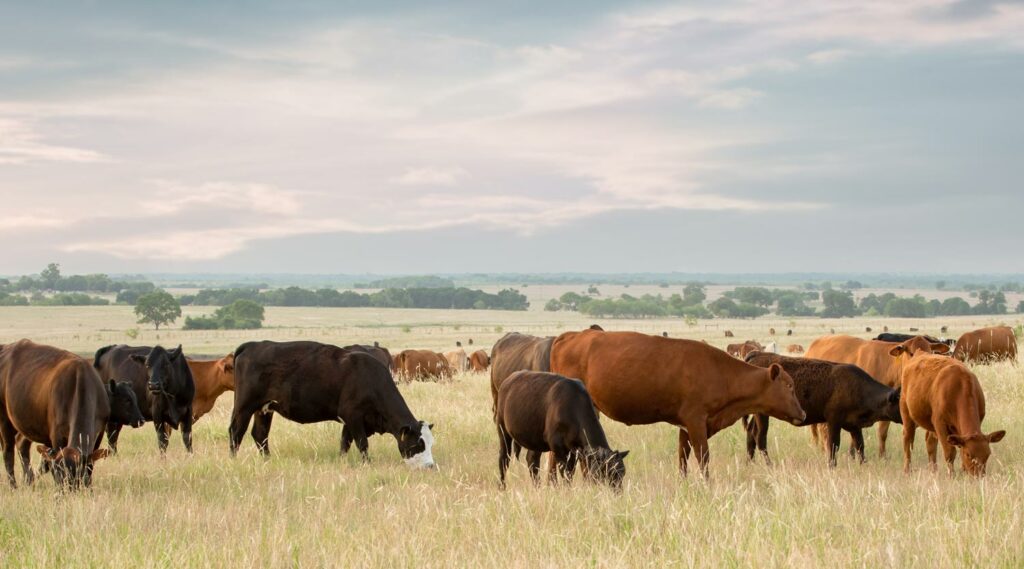
Here we have five key reasons why animals move. But we live in a culture that does not believe animals move. In our industrial mechanically-minded cultural paradigm, we lock them up in houses, make them live on their own excrement their whole life, breathe in fecal contaminants, and put them in tiny cells where they can’t even stretch their limbs. We put horses in paddocks by the house where they eat the grass into the ground, create manure campsites, can’t get away from flies, and never enjoy fresh ground.
I hope this short foray into animal movement explains why it’s important for both animal health and the health of the soil and vegetation covering the soil. All parties benefit. Violating animal movement principles, likewise, hurts animals, soil, and vegetation.
Obviously, in our owned and fenced properties, these ancient movement patterns are problematic. Starbucks doesn’t want a herd of 5 million bison running through the parking lot. Likewise, a flock of 10 million passenger pigeons roosting on cars in a car park would be a bummer. But appreciating the importance of animal movement, within the modern context, how do we duplicate it?
I’ll drill down into the practical how-to of this in next month’s column, but for now, I want to drive home the basic idea that nothing and no one wins when we leave animals in a stationary setting. That includes, by the way, a milk cow field, horse paddock, chicken run, or goat pen. If the grass is always short; if the pasture or paddock has dirt showing through, unprotected by forage; if the animals can’t get sunshine and fresh air—none of these scenarios delivers health.
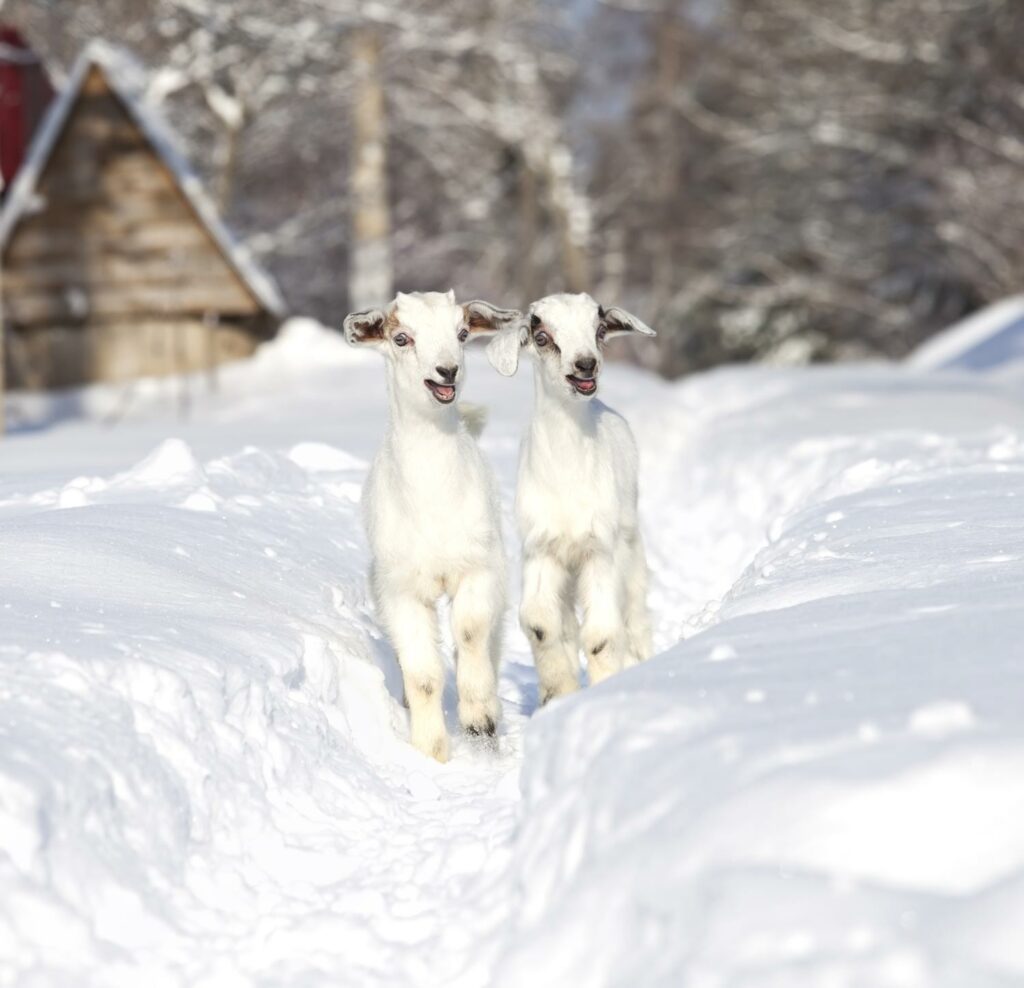
Some of the worst animal situations I’ve seen around the world are not in industrial confinement facilities, although those are the most notorious and receive the highest negative publicity. No, some of the worst I’ve seen have been the backyards of homesteaders who have their animals confined in filthy conditions and debilitated forage. If this sounds like a sermon, it is.
Fortunately, we now have the technology to duplicate God’s animal movement protocol on a domestic and commercial scale. We have water pipes to deliver clean water anywhere on the property. We have electric fence that’s easy and cheap to install. We even have portable electric fence that allows us to literally “drive” the animals around our property. We have nursery shade cloth and lightweight reflective roofing to enable portable shelters. For the first time in human history, we can build portable shade trees for our animals.
Prior to plastic pipe, electric fence, and shade cloth, duplicating natural animal movement was almost impossible. Thomas Jefferson lamented routinely that he couldn’t control his animals. George Washington complained about his pig operations because he could never count them because he couldn’t corral them.
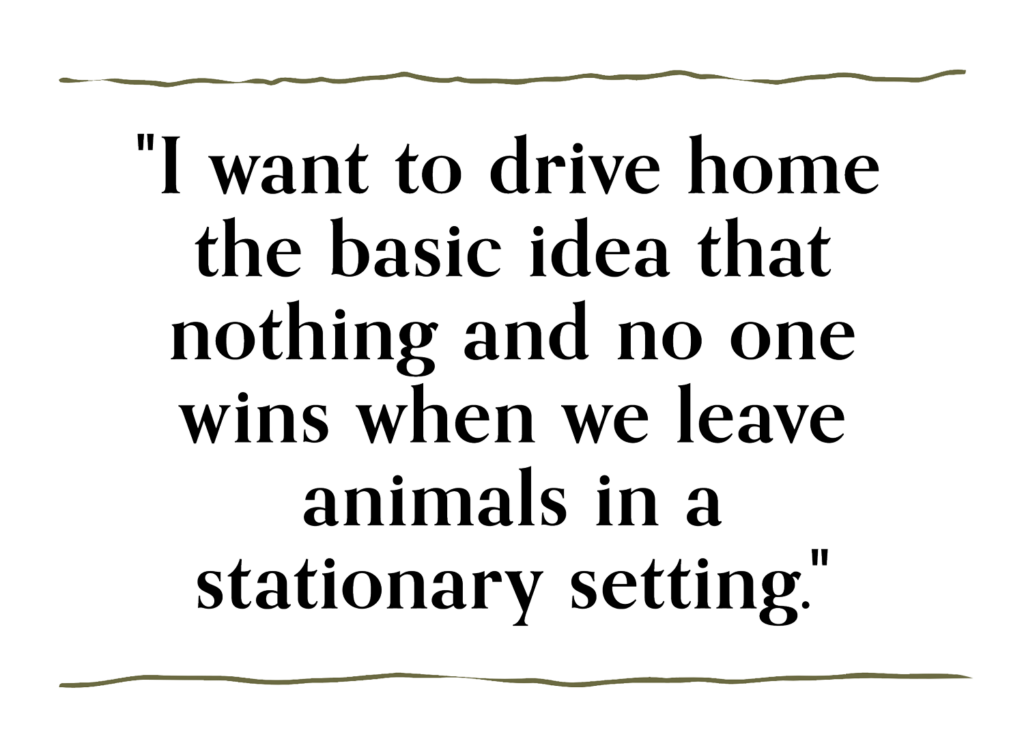
Those deficiencies are all in the past. We now have options our great-grandparents could only have dreamed about. In fact, we can now keep large commercial flocks of pastured chickens more hygienically than a backyard flock a century ago. Next month, I’ll explain some of the infrastructure and techniques that have made this ultimate duplication of God’s design on a domestic personal property doable. We live in exciting times!
This article was published in the January 2022 issue of Plain Values Magazine. If you want the latest stories every month, subscribe to the magazine at plainvalues.com. As a special thanks, get 10% off your subscription with the code “GAB23”!
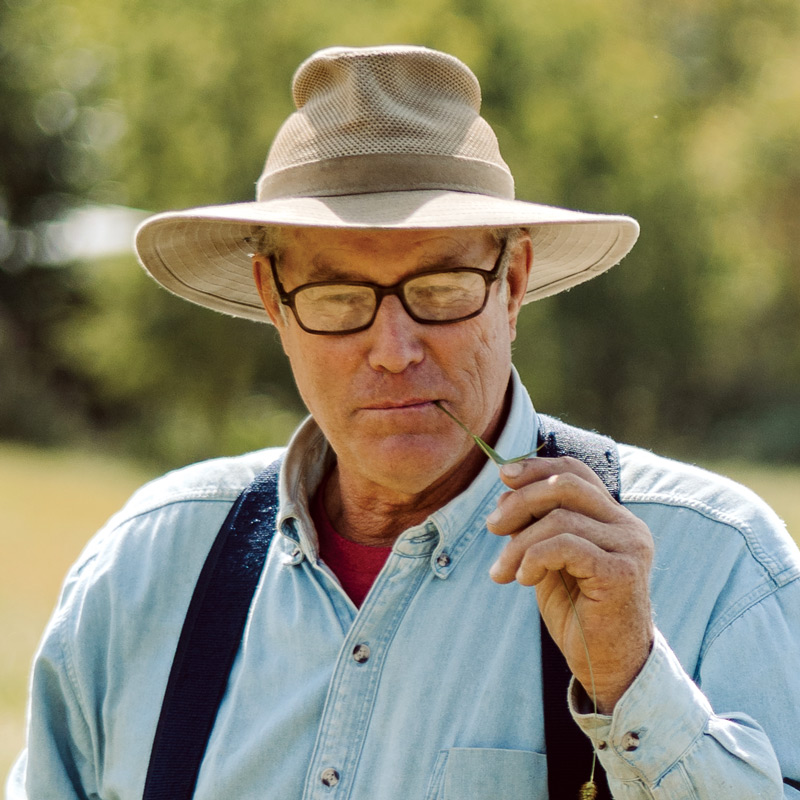
Joel co-owns, with his family, Polyface Farm in Swoope, Virginia. When he’s not on the road speaking, he’s at home on the farm, keeping the callouses on his hands and dirt under his fingernails, mentoring young people, inspiring visitors, and promoting local, regenerative food and farming systems.


